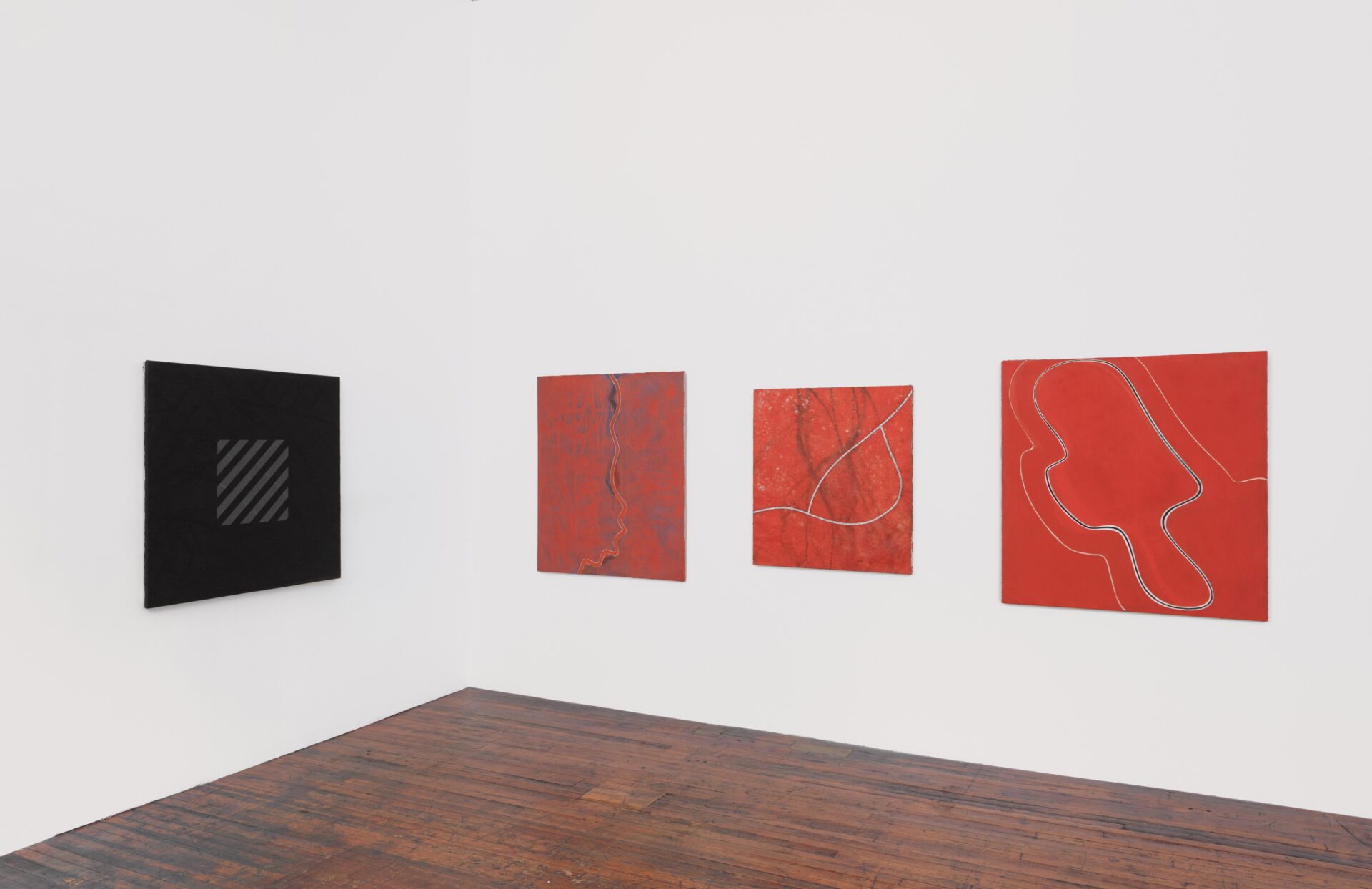Donald Judd: Paintings 1960-1961
September 22–December 8, 2018
101 Spring Street
New York, NY

Donald Judd: Paintings 1960-1961
September 22–December 8, 2018
101 Spring Street
New York, NY

Judd Foundation presents Donald Judd: Paintings 1960-1961, nine works by the artist on the ground floor of 101 Spring Street in New York. The exhibition will be on view from September 22 through December 8, 2018.
Judd began as a painter before transitioning to work in three dimensions in 1962. A largely understudied part of his oeuvre, his paintings from the early 1960s incorporate a series of stylistic transitions that reflect his interests and development as an artist. Oil paintings made between 1956 and 1958 feature irregular shapes that are neither strictly organic nor geometric, whereas in later paintings from 1960 to 1962 Judd made use of repeating forms, a reduced color palette, found objects, and wax and sand to build up the canvas, plywood, or Masonite surfaces.
In a 1971 interview with John Coplans, Judd states of the work, “Two things were going on in the painting: some of the earlier ones were organic and had curved lines; secondly, they were illusionistic to some extent, and I very steadily got tired of both things and tried to get rid of spatial illusionism, but I couldn’t get rid of it. So even in a painting like the red one with the gray stripes, painted in 1961, which is just all surface, there is still a spatial play around the lines.” He continues “… one also had the problem that there were at least two things in the painting: the rectangle itself and the thing (image) in the rectangle, which is true even in Newman’s. You couldn’t get around that. The only paintings that didn’t have that kind of problem were Yves Klein’s—the blue paintings. But for some reason I just didn’t want to do monochrome paintings.”¹
The nine untitled works in the exhibition, four from 1960 and five from 1961, reflect Judd’s experiments with a variety of techniques and the possibilities for creating non-illusionistic space in two dimensions. Judd incorporated found objects into the support of the paintings and added wax and sand to his paint to create a definite surface. While the paintings were less illusionistic than most contemporary work, given the constraints of painting, Judd could not realize his spatial goals, specifically the creation of actual rather than illusionistic space. In his shift to three dimensions, Judd often used metal, acrylic sheets, and plywood in which color was inherent in the material itself, as opposed to the applied color of painting, which would be characteristic of his work in the forthcoming decades.
The formal shifts in Judd’s paintings, as well as his move to work in three dimensions, coincided with his tenure as an art critic. From 1959 to 1964, Judd reviewed hundreds of shows across the spectrum of contemporary art. The knowledge gained from this consistent viewing of new work, undoubtedly affected his practice, particularly his transition from painting to the use of found objects and the fabrication of works in three dimensions. Work by artists including John Chamberlain, Claes Oldenburg, Yayoi Kusama, and Lee Bontecou provoked a new direction in his work.
Judd’s paintings remain an infrequently seen body work outside of Judd Foundation spaces in Marfa, where he permanently installed his paintings from the mid-1950s to the early 1960s in the Cobb House, Whyte Building, and Architecture Studio. Only two exhibitions have focused on his early work, a retrospective at the Kunsthalle Bielefeld (May 5-July 21, 2002) that then traveled to The Menil Collection (January 31-April 27, 2003), and an exhibition of late paintings at the Institute of Contemporary Art, Miami (April 5-June 24, 2018). Donald Judd: Paintings 1960-1961 marks the first presentation of these works in New York. Curated by Flavin Judd, the exhibition will be accompanied by public programs looking at Judd’s painting practice.
1 John Coplans, “An Interview with Don Judd,” Artforum, June 1971.

Donald Judd: Paintings 1960-1961 is made possible with support from Catherine Lagrange.